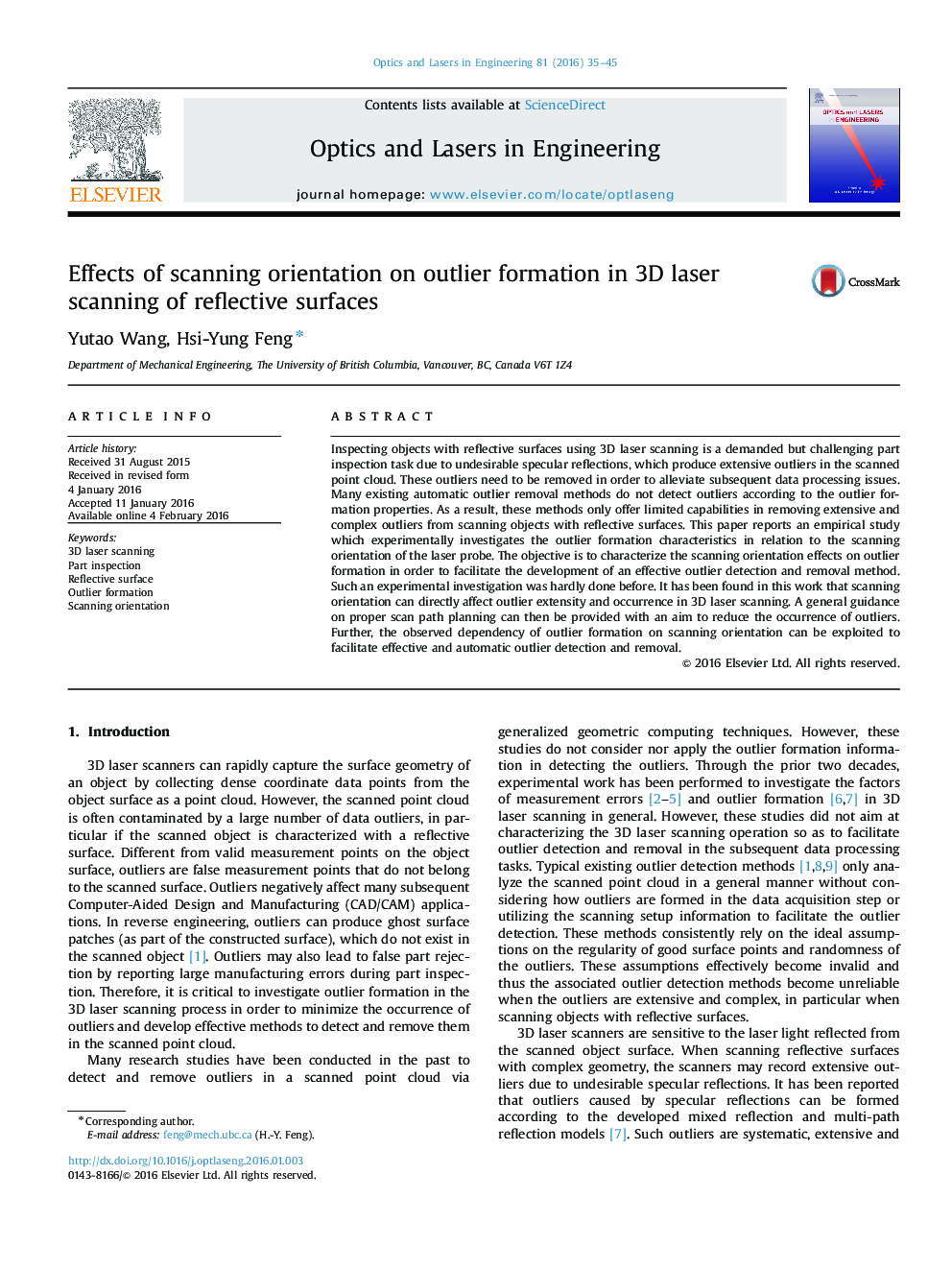| کد مقاله | کد نشریه | سال انتشار | مقاله انگلیسی | نسخه تمام متن |
|---|---|---|---|---|
| 7132348 | 1461712 | 2016 | 11 صفحه PDF | دانلود رایگان |
عنوان انگلیسی مقاله ISI
Effects of scanning orientation on outlier formation in 3D laser scanning of reflective surfaces
دانلود مقاله + سفارش ترجمه
دانلود مقاله ISI انگلیسی
رایگان برای ایرانیان
موضوعات مرتبط
مهندسی و علوم پایه
سایر رشته های مهندسی
مهندسی برق و الکترونیک
پیش نمایش صفحه اول مقاله

چکیده انگلیسی
Inspecting objects with reflective surfaces using 3D laser scanning is a demanded but challenging part inspection task due to undesirable specular reflections, which produce extensive outliers in the scanned point cloud. These outliers need to be removed in order to alleviate subsequent data processing issues. Many existing automatic outlier removal methods do not detect outliers according to the outlier formation properties. As a result, these methods only offer limited capabilities in removing extensive and complex outliers from scanning objects with reflective surfaces. This paper reports an empirical study which experimentally investigates the outlier formation characteristics in relation to the scanning orientation of the laser probe. The objective is to characterize the scanning orientation effects on outlier formation in order to facilitate the development of an effective outlier detection and removal method. Such an experimental investigation was hardly done before. It has been found in this work that scanning orientation can directly affect outlier extensity and occurrence in 3D laser scanning. A general guidance on proper scan path planning can then be provided with an aim to reduce the occurrence of outliers. Further, the observed dependency of outlier formation on scanning orientation can be exploited to facilitate effective and automatic outlier detection and removal.
ناشر
Database: Elsevier - ScienceDirect (ساینس دایرکت)
Journal: Optics and Lasers in Engineering - Volume 81, June 2016, Pages 35-45
Journal: Optics and Lasers in Engineering - Volume 81, June 2016, Pages 35-45
نویسندگان
Yutao Wang, Hsi-Yung Feng,